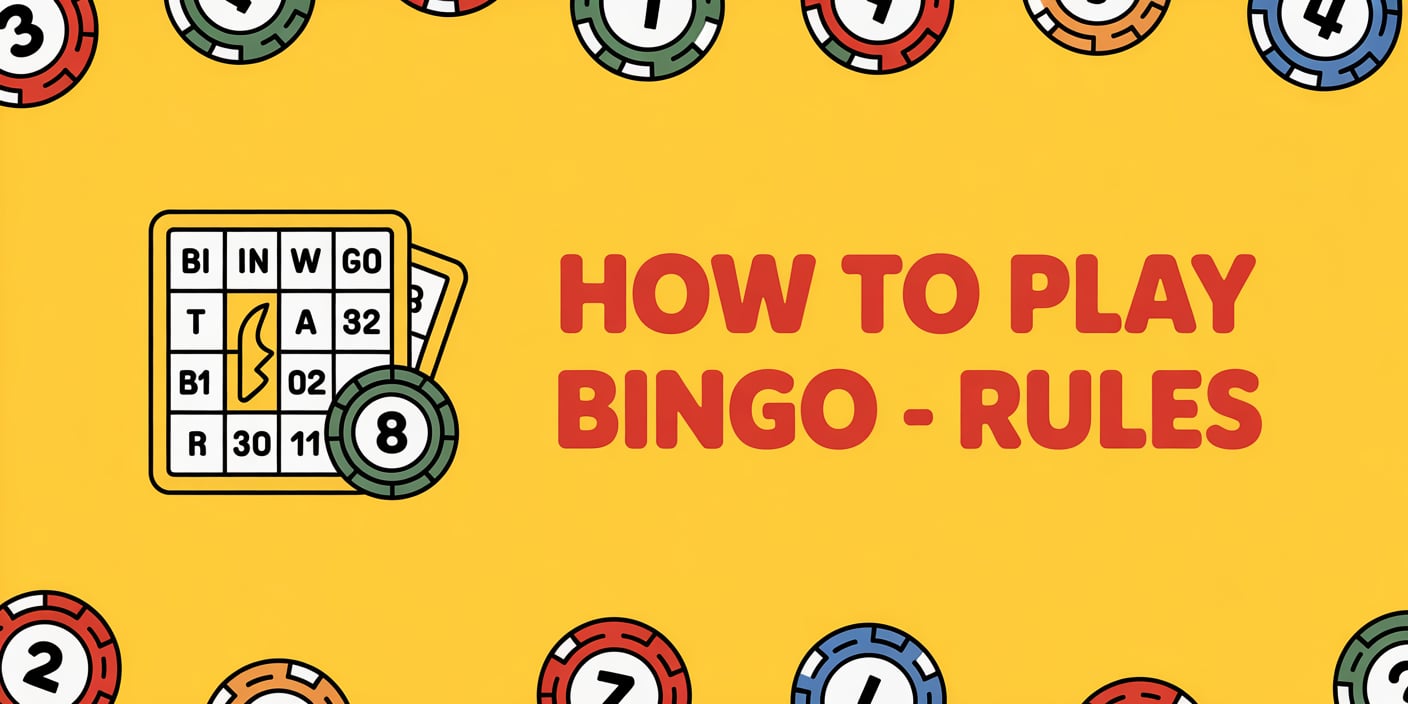How to Play Bingo - Rules

Benefits of Playing Bingo in Online Casinos
Edwin S. Lowe used a math professor at Columbia University to help him increase the number of possible combinations for Bingo cards. And so, 6,000 different Bingo cards were developed. Today, there are hundreds and hundreds of Bingo versions, and even the most passionate supporters of this unique game cannot count them all.
There are several bingo online websites, and all of them regularly bring new and easy to play Bingo games.
Online Bingo websites have turned into a great opportunity for players to get access to fun games easily. The biggest advantage of playing on online casino websites is the sufficient range of different Bingo games and unique forms of Bingo that one can get access to.
Compared to them, players in traditional Bingo clubs are limited to just a single type of Bingo.
What Are the Rules of Bingo?
So, what are the rules of Bingo? How do you play Bingo with cards?
To start playing, the player must purchase at least one numbered Bingo ticket (card) from a Bingo representative (in a live Bingo hall) or from a digital host (in an online game). This is the basic rule of Bingo.
Once the game begins, numbered balls are randomly drawn and announced. If a drawn ball matches a number on your ticket (card), that number is marked. The objective is to mark off a full column, row, diagonal, or all numbers on your ticket, depending on the type of game being played.
This is a simple explanation of how to play Bingo in a Bingo hall or at an online casino.
Types of Bingo Games
A few of the most common types of Bingo games are 90-ball Bingo, 75-ball Bingo, and 75-ball Pattern Bingo. The number indicates the amount of balls used for playing the game.
90-Ball Bingo is played in Britain and is the traditional version of the game. Read on to discover the rules of traditional Bingo. Don't confuse this variety with 75-ball Bingo, played in America, because the tickets and calling process are slightly different.
Guide to 90-Ball Bingo
So how do you play 90-ball Bingo?
90-ball Bingo rules: The balls range from 1 to 90 and are employed in playing the game. The tickets are in 3 rows and 9 columns with 5 numbers per row. The outcome is 15 numbers in each ticket ranging from 1 to 90, and the remaining spaces are blank. There are numbers of each different range in each column: numbers 1–9 in the first column, numbers 10–19 in the second, and so on.
There are three possible prizes at 90-ball Bingo: two lines, one line, and a Full House. The one who has the numbers all boxed off on his/her card gets the Full House.
A regular 90-ball Bingo game requires a strip of six tickets during a round. All 90 numbers used within the game are distributed among the six tickets in such a manner that each number appears once in the strip.
A number of web sites also give players a chance to win a progressive jackpot, which offers them the potential for winning lots of money in one game.
75-Ball Bingo and Pattern Bingo
Rules of 75-ball Bingo: Traditional 75-ball Bingo uses numbers 1 to 75. These are single tickets on sale (not in strips). There is a 5x5 grid per ticket, with a number in each square except the middle square, which is a free space. This free space helps complete rows, columns, or diagonals with only four numbered numbers.
At the top of each card are the letters B-I-N-G-O, with each column consisting of numbers of a specific set. Column B for 1–15, column I for 16–30, and so on.
There are five prizes one can receive: for one line, two lines, three lines, four lines, and finally five lines (Full House). The first line may be horizontal, vertical, or diagonal but all the other lines must be horizontal.
75-ball Pattern Bingo, also called Pattern Bingo, is another type of bingo. Cards come in strips of three and each number from 1 to 75 is displayed once along the strip. There usually is no free square. Pattern Bingo is won by completing a specific designated pattern by marking numbers. Shapes used in patterns might be a "big X," three lines, four corners, blackout, letters, numbers, etc.
Now you’re ready to start playing. Just follow these basic Bingo rules!
© 2002-2012 by Thomas Wiedmann : (Stand : 21.05.2025).
Powered by Zend Framework and "Yahoo! User Interface" (YUI)
